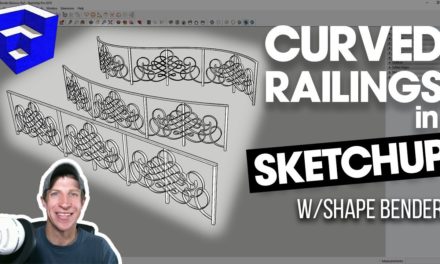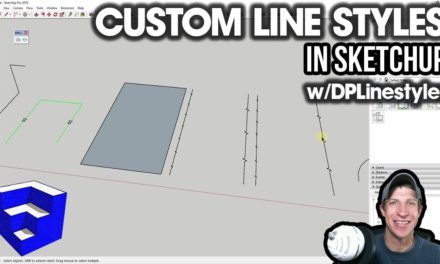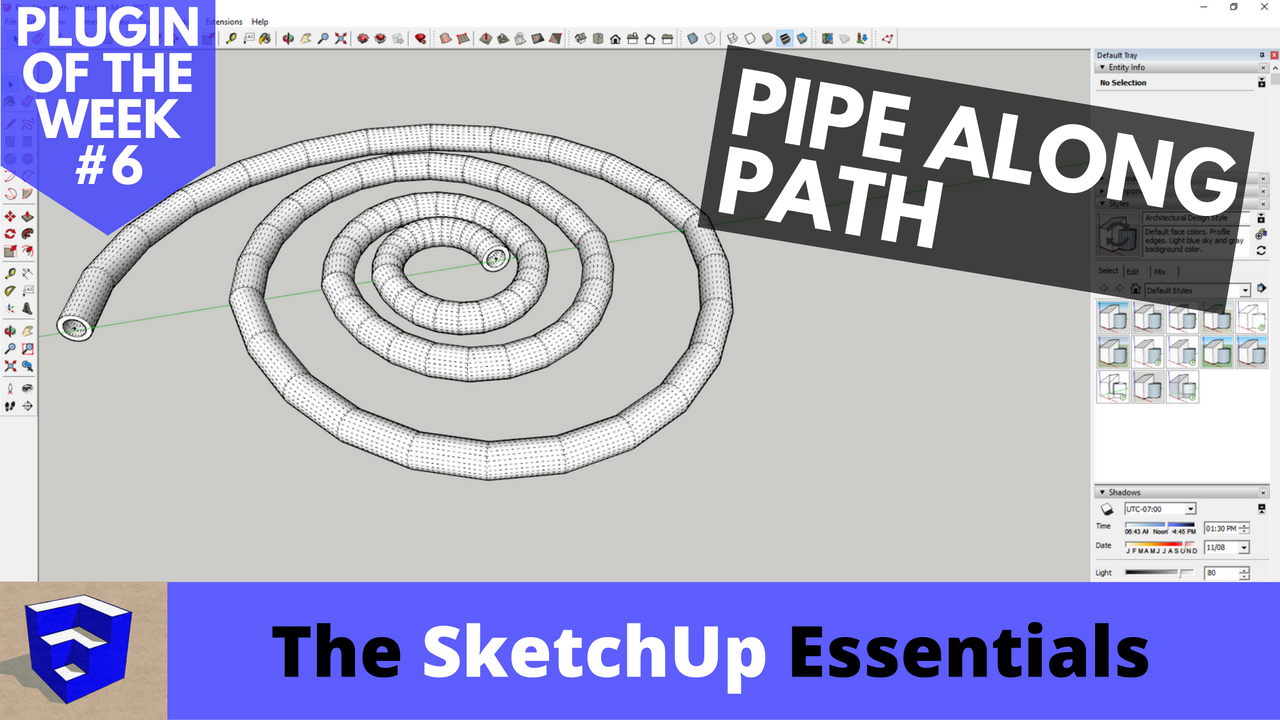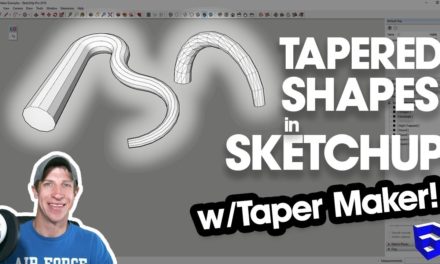REAL CLOTH SIMULATION IN SKETCHUP with Clothworks!
In today’s video, we check out Clothworks – a brand new extension for SketchUp from the creator of MSPhysics that allows you to simulate cloth and fabric!
Do you like these SketchUp tutorials and videos?
If so, please consider supporting me on Patreon (click here to support) or by visiting my Support the Show Page!
THE SKETCHUP ESSENTIALS COURSE
http://www.thesketchupessentials.com/course
CLOTHWORKS DOWNLOAD
https://sketchucation.com/pluginstore?pln=ClothWorks
Plugin Name:
Clothworks
Plugin Developer:
Anton Synystsia
Plugin Cost:
Some base functions can be accessed for free. Full functionality – $29 – Note that if you’re a paid SketchUcation user, you get a discount off this cost
Where can you get it? You can get it from the SketchUcation store, or by visiting the link in the notes below
One thing to note – to purchase a license, you’re going to also need to have the most up to date version of the SketchUcation store on your computer as well, otherwise you won’t be able to purchase. This was a bit confusing to me until I updated, at which point it got a lot simpler.
Tool Functions:
This extension is designed for simulating cloth within SketchUp. You can use it to hang and drape different fabrics within your SketchUp models.
- You can adjust different settings, like gravity, wind, drag, and well as the timestep and rate that the extension calculates and updates your materials.
- This extension operates much like the extension MSPhysics, which was developed by the same author. You can interact with the geometry while the extension plays by clicking and dragging.
- The way it works is actually fairly simple. You create different groups, then you right click and tell clothworks if they’re cloth, pins, or colliders. A collider is an object that interacts with your fabric without moving. For your cloth to work properly, you’re going to have to subdivide your cloth objects, which you can do by right clicking and going down to your cloth object, then applying a grid.
- If you turn on hidden geometry, you can tell that what this is doing is subdividing your face so that it can be draped over your geometry.
- Note that there are also options for turning on self-collision in the object section of the menu, allowing even greater realism by keeping the cloth from overlapping itself.
- You can also set fixed points, or pins, in order to hang cloth. Note that these are also editable, meaning you can move them around within your cloth simulation. Single and multiple points can be selected and moved.
- Wind can also be simulated, though in order for it to be done properly, you need to set your settings a certain way.
- One other great feature of this extension is its ability to UV map your materials. Note that this only works if you apply the materials BEFORE you run the simulation.
- Once you’ve run your simulation, you can use one of the smooth options within the material settings to really make your model look nice.
Overall, I’m very impressed with this extension. It brings something to SketchUp that you really didn’t have before – that ability to simulate actual cloth. Once you get started with it, it’s actually fairly easy to use.
About Justin Geis
Hi, I'm Justin Geis, and I'm the founder of The SketchUp Essentials. I started using SketchUp as part of my work as a general contractor in 2008. I quickly realized the power of the software and started using it for personal projects. I started The SketchUp Essentials as a place to share easy to follow SketchUp tutorials and tips to help everyone harness the power of 3D Modeling in their lives. When not working with SketchUp, I enjoy playing soccer and spending time with my wife and our two dogs.




